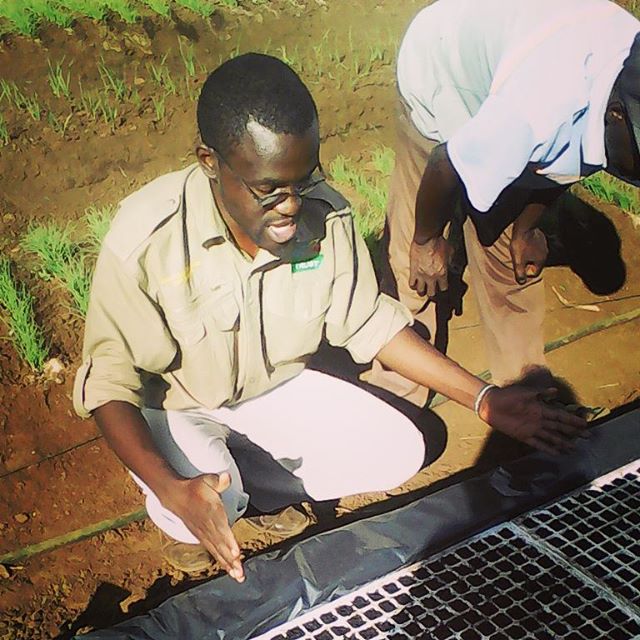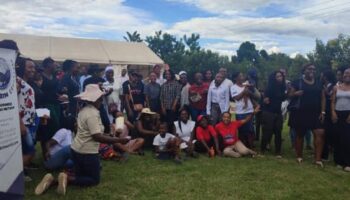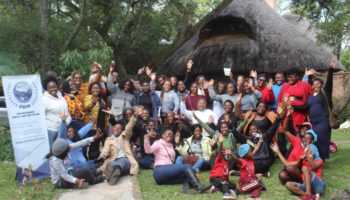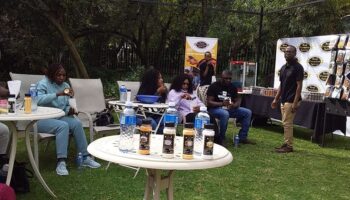Hydroponics is the art of rearing plants in a soil less media, what does this really mean?. Well this simply means growing a plant without the use of soil, the technique has been used for more than 3 decades in the developed world and has only been introduced in Zimbabwe not more than a decade ago tailor made specifically for the tobacco industry by Kutsaga Research Station Tobacco Research Board with tremendous results. This week we shall be looking at this technique in greater detail and learn how to use this technique particularly for those of you who are into nursery production business and specifically tobacco farmers.
If you have grown tobacco before then you must be well aware of the time consumed taking care of the tobacco seedlings which translates to a lot of labour days and huge wage costs. What if I tell you that there is a way in which you can cut those costs by 65% at the same time producing quality seedlings which will in turn create a great reputation for you if you are into seedling production or translate to a great crop establishment if you are into tobacco production? In this article we shall dwell on tobacco seedling production using this method since most farmers are already preparing to sow in their seedbeds in the next few days or weeks also mainly due to the huge email requests on the topic.
This method involves the use of trays which made of kaylite which are able to float in a specially made pond with water. The water will basically have a special liquid fertilizer added to it to in the process providing adequate amount of nutrients to the growing seedling which will be in pine bark acting as the soil.
Advantages of using this type of method
It uses fewer chemicals and in smaller quantities, it employs economical integrated management of diseases and pests, it uses less water and fertilizers ,it produces superior and more uniform drought tolerant seedlings, it offers additional flexibility in planning following pulling, it facilitates easier field management arising from a more uniform crop, it has a permanent seedbed site and there is no need for rotations, trays can last for five or more years if kept properly
What do I use in place of soil ?
Pine bark, washed river sand and water mixed in the ratio 1; 1; 0.5 by volume are used as the growing medium for the 200 cell trays. For 242 cell trays use 100% pine bark and water and mix in the ratio 1:0.5, or mix pine bark, sand and water in the ratio 3:1: 0,5 by volume. The ratio of the water may be reduced or increased depending on the moisture content of the other constituents. The pine bark used is supplied by Flora Pine Bark Produce (Pvt) Ltd in Mutare and Nyanga. Large pieces of pine bark or sand are removed by screening through a 6mm sieve.The pH of the pine bark should be maintained at 5.5.The sand can be a source of weed seeds, pathogens and nematodes and so it should be solarised, steamed or boiled before use. Limited amounts of amended composted pine bark are available at Kutsaga as Gromix.
How do I water the seedlings?
No need to worry about watering your seedlings remember the trays will be suspended in water all the time meaning that the seedlings are always in nutrient rich water. All you have to be aware of is making sure that the ponds are filled with water to a depth of 10 cm all the time.
Since the seedlings are in water how do I harden them before transplanting?
Seedlings should be sufficiently hardened so as to survive the difficulty of transplanting under difficult conditions experienced in the lands. Hardening is done by ensuring that the seedlings utilize most of the nitrogen early in the growth and that little remains in the water during the last two to three weeks before transplanting. Clipping also has a hardening effect. For further hardening remove the fertilizer solution from the waterbed, and replace the solution with water only for the last week of production.The simplest test for “hardness” is that a seedling should be able at least to be bent over without snapping.
Common challenges
Algae Growth, actual harm to the seedlings is unusual.Cover as much as possible of the surface water with trays so as to exclude sunlight on water, which encourages algal growth.It can also be controlled by delaying the fertilizing of the float bed to 14 days after seeding, this allows the seedlings to germinate and grow above any algal growth on the cell surface.As a preventative measure apply a Quaternary Ammonium Compound (QAC) or copper oxychloride in float water at sowing. Copper oxychloride is applied at the rate of 0.012 g/L and Pentakill at 0.18 ml/L for one hectare.
Others
Dry Cells: Water fails to move up the cell by a process called “wicking” due to loose compaction of media in cells. No wicking means no germination. Follow the tray filling and handling procedure correctly.
Cold injury: The float beds should not be allowed to get cold. The June sown nurseries need to have both cropgard and plastic tent and a greenhouse.
Salt Injury: Greyish salt deposits on substrate surface. Severe cupping of seedling. The possible solution is to water with a knapsack sprayer thoroughly to leach the salts from the surface. Also cover with Cropgard or a sterile mulch plus plastic cover at night.
For a more detailed guide please don’t hesitate to contact us.
Emmanuel D.N Dube is the senior agronomist at Agro Aid Trust and Chief Agronomist at ZIBN. If you have any questions you can email him agroaidtrustzimbabwe@gmail.com /+263783 495 396
![]()





